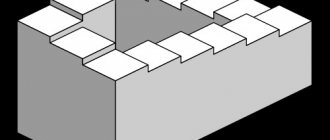“Tell me and I will forget. Show me and I will remember. Call me with you and I will understand.”
Confucius (ancient thinker and philosopher of China).
Perhaps everyone knows psychology as a system of life phenomena, but as a system of proven knowledge, few know it, and only those who specifically deal with it, solving all sorts of scientific and practical problems. The term “psychology” first appeared in scientific use in the 16th century, and denoted a special science that studied mental and mental phenomena. In the 17th – 19th centuries, the scope of research by psychologists expanded significantly and covered unconscious mental processes (the unconscious) and the detail of a person. And already from the 19th century. Psychology is an independent (experimental) field of scientific knowledge. Studying the psychology and behavior of people, scientists continue to look for their explanations, both in the biological nature of man and in his individual experience.
Definitions and concepts
Before considering the ideas and principles, it is necessary to define the basic concepts of Gestalt psychology. This is a psychological direction that aims to explain perception, thinking and personality in general.
This direction is built on gestalts - forms of organization that create the integrity of psychological phenomena. In other words, a gestalt is a structure that has holistic qualities, as opposed to the sum of its parts. For example, a portrait or photograph of a certain person includes a set of certain elements, but other people perceive the image as a whole (and in each individual case it is perceived differently).
The history of this psychological trend
The history of the development of the direction of Gestalt psychology dates back to 1912, when Max Wertheimer published his first scientific work on this topic. This work was based on the fact that Wertheimer questioned the generally accepted idea of the presence of separately existing elements in the process of perceiving something. Thanks to this, the 20s went down in history as the period of development of the school of Gestalt psychology. The main personalities who figured in the emergence of this trend:
- Max Wertheimer.
- Kurt Koffka.
- Wolfgang Köhler.
- Kurt Lewin.
These scientists made an invaluable contribution to the development of this area. However, more details about these representatives of Gestalt psychology will be discussed a little later. These people set themselves a difficult task. The first and main representatives of Gestalt psychology were those who wanted to transfer physical laws to psychological phenomena.
Introduction to the works of Spinoza
Wertheimer became acquainted with the social and philosophical thought of his maternal grandfather Jakob Zwicker, who was so pleased with his grandson's maturity that on his tenth birthday he gave him some of Spinoza's works. Max Wertheimer's complete absorption in a book given by his grandfather led his parents to limit his reading. This did not stop him from reading Spinoza in secret, taking advantage of the kindness of the maid, who hid the book from her parents in her chest. Spinoza was not something new; he influenced Wertheimer for life.
The principles of this psychological direction
Representatives of Gestalt psychology have established that the unity of perception, as well as its orderliness, is achieved based on the following principles:
- Proximity (stimuli that are close tend to be perceived not individually, but collectively).
- Similarity (stimuli that have a similar size, shape, color or outline are perceived collectively).
- Integrity (perception tends towards simplification and integrity).
- Closure (describes the tendency to complete a figure so that it takes on a complete form).
- Contiguity (close position of stimuli in time and space).
- Common area (Gestalt principles shape everyday perception as well as past experiences).
- The principle of figure and ground (everything that is endowed with meaning acts as a figure, which has a less structured background).
Guided by these principles, representatives of Gestalt psychology were able to determine the main provisions of this direction of psychology.
Examples of some principles
A clear example of the above can be any graphic image in which a geometric figure is drawn not with one continuous line, but with many small segments. A person will immediately see the figure and only then distinguish its constituent segments. This is an example of the principle of closure. Graphically, you can represent any of the basic principles in this area of psychology.
The zone of general perception can well be illustrated by any ordinary situation. Let's say a person uses public transport every day. He rides a red tram. Arriving at the stop, he will be waiting for the red tram. If a blue or green carriage arrives, a person will feel confused and begin to look for a sign with a numbered route designation, although he will sit in the red one immediately without looking at it.
Basic provisions
Based on the principles, the main provisions can be described as follows:
- All processes of psychology are integral processes that have their own structure, which has its own set of specific elements that will always be secondary in relation to it. Based on this, the subject of Gestalt psychology is consciousness, which has a structure filled with closely related elements.
- Perception has such a feature as constancy. This suggests that the constancy of perception is the relative invariance of certain properties that objects possess (in the presence of changes in the conditions of perception). For example, this could be constancy of lighting or color.
Fundamental ideas of Gestalt psychology
Representatives of this school identified the following basic ideas of this direction of psychology:
- Consciousness is a holistic and dynamic field in which all its points are in constant interaction with each other.
- Creation is analyzed using gestalts.
- Gestalt is a holistic structure.
- Gestalts are studied through objective observation and description of perceptual contents.
- Sensations are not the basis of perception, since the former cannot exist physically.
- The main mental process is visual perception, which determines the development of the psyche and is subject to its own laws.
- Thinking is a process that is not formed based on experience.
- Thinking is a process of solving certain problems, which is carried out through “insight”.
Having determined what this direction in psychology is, as well as having understood its foundations, it is necessary to describe in more detail who the representatives of Gestalt psychology are, as well as what contribution they made to the development of this scientific field.
Literature
- Arnheim R.
Art and visual perception. - M.: Progress, 1974. - Arnheim R.
New essays on the psychology of art. - M.: Prometheus, 1994. - Wertheimer M.
Productive thinking. - M.: Progress, 1987. - Dunker K.
Psychology of productive (creative) thinking // Psychology of thinking. - M., 1965. P. 86-234. - Martsinkovskaya T. D.
History of psychology: a textbook for students of higher educational institutions / Editor E. V. Satarova. — 4th edition, stereotypical. - Moscow: Publishing House, 2004. - 544 p. — 10,000 copies. — ISBN 5-7695-1994-0. - Arnheim R.
Visual thinking. Berkeley and Los Angeles: California UP, 1967. - Koffka K.
Principles of Gestalt psychology. NY, 1935. - Kohler W.
Gestalt psychology. NY, 1947 (revised ed.). - James R. Lewis.
Encyclopedia of dreams. — P. 151.
Max Wertheimer
As noted earlier, Max Wertheimer is the founder of Gestalt psychology. The scientist was born in the Czech Republic, but he conducted his scientific activities in Germany.
According to historical data, Max Wertheimer, while on vacation, had the idea to conduct an experiment in order to understand why a person can see the movement of a certain object at a moment when in reality there is no movement. Having got off on the Frankfurt platform, Wertheimer purchased a very ordinary toy strobe light with the goal of conducting an experiment right in the hotel. Some time later, the scientist continued his observations in a more formal setting at the University of Frankfurt.
In general, these studies were aimed at studying the perception of the movement of objects, which does not actually occur. During the experiment, the scientist used the term “impression of movement.” Using a device such as a tachistoscope, Max Wertheimer passed a beam of light through the small holes of the toy (one slot of the toy was located vertically, and the second had deviations from the first by twenty to thirty degrees).
During the study, a beam of light was passed through the first slot, and then through the second. When the light passed through the second slit, the time interval was increased to two hundred milliseconds. In this case, the experiment participants observed how light appeared first in the first, and subsequently in the second slit. However, if the time period of illumination of the second slits was shortened, then the impression was created that both slits were constantly illuminated. And when the second slit was illuminated for 60 milliseconds, the light seemed to constantly move from one slit to the second, and then back again.
The scientist became convinced that such a phenomenon is elementary in its own way, but at the same time represents something different from one or even several simple sensations. Subsequently, Max Wertheimer gave this phenomenon the name “phi-phenomenon.”
Many have tried to refute the results of this experiment. In particular, Wundt's theory confirmed that the perception of two strips of light located next to each other, but nothing more, should have been created. However, no matter how strictly the introspection was carried out in Wertheimer’s experiment, the strip continued to move, and it was not possible to explain this phenomenon using the existing theoretical positions. In this experiment, the whole was the movement of the light line, and the sum of the constituent elements was two motionless lines of light.
Wertheimer's experience challenged conventional atomistic associationist psychology. The results of the experiment were published in 1912. This was the beginning of Gestalt psychology.
Abstracts For You
Introduction Chapter 1. Main directions in developing the problem of personality abroad 1.1. "Freudianism" 1.2. Personality in Gestalt psychology 1.3. Würzburg School 1.4. Behaviorism 1.5. School of Kurt Lewin Chapter 2. Domestic approaches to the study of the problem of personality in psychology 2.1. Theories of L.S. Vygotsky 2.2. S.L.'s approach Rubinstein 2.3. Ideas about personality at school V.N. Myasishcheva 2.4. The importance of attitude research for personality psychology 2.5. A.N.’s approach Leontyev 2.6. Concept by L.I. Bozovic Conclusion References
Introduction
It is known that the topic of personality is very relevant for modern psychology. This is evidenced by a huge scientific literature, and pedagogical literature devoted to concepts and theories of personality includes several hundred titles.
“The pace of development of personality psychology,” writes A. Asmolov, “will become more noticeable if we present the following facts that affect only one of the problems of personality psychology—the problem of “I.” If in 1969 about four hundred publications were devoted to this problem, then in 1980 their number exceeded a thousand.”
Such interest in the psychological study of personality is, of course, not accidental. Modern man, culture, and creativity manifest themselves through the idea of personality.
All this is happening against the backdrop of increased attention to the entire cycle of humanitarian topics, at the center of which, of course, are problems of culture and personality.
Turning to the study of personality, psychologists hope to understand a person, on the one hand, as a whole, to combine, “configure” various ideas about him received in different psychological theories, and on the other hand, as a unique and individual subjective formation.
Chapter 1. Main directions in developing the problem of personality abroad
In the first half of the 20th century, a number of independent psychological schools were formed in Europe and the USA, differing from each other in their different understanding of the subject of psychology, research methods and the system of basic psychological concepts. In Europe these were Freudianism, Gestalt psychology and the Wurzburg school, in the USA - behaviorism and the school of Kurt Lewin.
1.1. "Freudianism"
Sigmund Freud (1856-1939), widely using the method of free associations in medical practice, tracing the train of thoughts of patients, discovered the personal content of these associations, hidden from the patients themselves. Subconscious associations indicated stable motivational attitudes of the individual, mental trauma suffered by the individual. 3. Freud called his method and teaching as a whole psychoanalysis (“The Interpretation of Dreams,” 1900).
Freud opposed the identification of personality only with its consciousness. He came to the conclusion that human mental life has various interconnected levels. In the structure of personality, he identified three spheres: unconscious, preconscious and conscious.
Freud revealed to humanity a vast world that lies beyond his consciousness. Freud's ideas found numerous adherents. Various directions of Freudianism and neo-Freudianism emerged. Freud's concept significantly influenced the development of world culture - sociology, ethnography, art, medicine, etc.
Freud introduced a number of new categories into psychology: unconscious motivation, protective psychological mechanisms, the role of childhood trauma in the behavior of an adult, personality structure, mental organization of personality, personality conflict, etc. Freud’s merit also lies in combining psychological theory with psychotherapeutic practice.
Having raised the question of the natural nature of man, Freud, however, absolutized this nature and underestimated the social essence of man. Closest collaborators 3. Freida K.G. Jung and A. Adler subsequently disagreed with him in their interpretation of this problem.
1.2. Personality in Gestalt psychology
In 1912, in Frankfurt am Main, under the leadership of Max Wertheimer (1880-1943), a new psychological school arose - Gestalt psychology (from German Gestalt - form, structure). It included famous psychologists Wolfgang Köhler (1887-1967) and Kurt Koffka (1886-1941).
In Wertheimer's experiments on perception, it was established that within consciousness there are integral formations (gestalts) that cannot be decomposed into sensory primary elements. Mental images are not complexes of sensations; they fit into initially formed mental structures. Under the influence of the concept put forward at one time by Brentano, Wertheimer became an adherent of the active essence of consciousness: consciousness is active - it builds its images of the external world, relying on some initially existing structures - gestalts.
The progressive significance of Gestalt psychology consisted in its overcoming of “atomism” in psychology - the idea that images of consciousness are built from bricks of sensations.
In the research of Gestalt psychologists, many phenomena of visual perception were discovered: the interaction of figure and background, integrity and structure of perception, apperception, pregnancy - the desire of perception for a “good” form (simple and orderly), constancy of perception (constancy of the image of an object, despite changes in the conditions of its perception ), the phenomenon of “proximity” (the tendency to fill in the gaps between adjacent elements of a perceived figure). Gestaltists also tried to explain many phenomena in the psychology of thinking in the context of the above laws.
Gestaltists explained adaptive forms of behavior with the universal concept of “insight” (from the English insight - insight, discretion) - a sudden grasp of relationships when solving problematic problems.
Research by Gestalt psychologists has shown that the human psyche cannot be explained only by external determination. There are also structures initially formed in it that can be modified by external influences. Thus, sequentially presented static stimuli can create a movement effect (phi-phenomenon).
1.3. Wurzburg school
In 1915, Wundt's student Osvold Külpe (1862-1915) founded the Würzburg Psychological School in Würzburg (Bavaria), which studied higher mental processes - thinking and will. The object of scientific analysis was the implementation of intellectual tasks and problem thinking.
In the course of experiments combined with introspection, the Würzburg school found that thinking as a mental process is not reducible to either the laws of logic or the laws of the formation of associations. The associations themselves are selected in thinking in accordance with the attitude that arises depending on the task accepted by the subject.
The Würzburg school established the presence of non-sensory (ugly) components of thinking - mental actions and non-sensory system-forming components of consciousness - meanings and meanings.
At this time, among American psychologists, under the influence of the philosophy of pragmatism, the psychological school of behaviorism emerged, which completely abandoned the concept of “consciousness.”
1.4. Behaviorism
Behaviorism (from the English Behavior - behavior) recognized behavior and behavioral reactions as the only object of psychological study. Consciousness as a phenomenon that cannot be observed was excluded from the sphere of behaviorist psychology. Only externally manifested behavior was studied.
The founders of behaviorism were John Brodes Watson (1878-1958) and Edward Thorndike (1874-1949). The term “behaviorism” was introduced into scientific use in 1913 by Watson. But ideologically, behaviorism was prepared by Thorndike. Using a “problem box” (labyrinth) in experiments on animals, he obtained extensive experimental material on the problem of animal learning (“Animal Intelligence,” 1898).
The achievement of behaviorism was the development of experimental techniques based on the control of external influences and the body's reactions to these influences. Behaviorism considered the complex behavior of animals and humans as a set of motor reactions (R) in response to external influences - stimuli (S). S->R - this is the formula of behaviorism.
According to behaviorism, a person at birth has a certain number of innate patterns of behavior, on which more complex forms are built - “behavior regulators”. Successful reactions are consolidated and tend to be reproduced in the future (“the law of effect”). - The consolidation of reactions occurs according to the “law of exercises” - as a result of repeated repetition, they are automated.
Within the framework of behaviorism, many patterns of skill development have been established. However, in general, the categorical system of behaviorism remained extremely limited. Behaviorism ignored the most important mental components of action - motivation and mental images of action as the orienting basis for its implementation. The social factor was completely excluded from the psychology of human behavior. The animal and human brain was viewed by behaviorists as a “black box.”
1.5. Kurt Lewin School
In the development of the general theory of regulation of human behavior, the “field” theory of the German psychologist who emigrated to the USA, Kurt Lewin (1890-1947), played a significant role.
Being the head of the center for the study of group dynamics at the Massachusetts Institute of Technology and in contact with Wiener, who at that time was developing the foundations of cybernetics at the same institute, K. Levin investigated the problem of group dynamics.
Using the physical concept of “field,” Lewin introduced the concept of psychological space. Levin considered the living space of an individual as a kind of holistic field within which psychological forces arise and interact - aspirations, levels of aspirations, leadership manifestations, conflicts.
Chapter 2. Domestic approaches to the study of the problem of personality in psychology
2.1. Theories of L.S. Vygotsky
L.S. Vygotsky (1896-1934) is one of the methodologists of psychology who devoted a lot of time to developing a program and methods for empirical research of the child’s psyche. Over ten years of intensive scientific work in the field of psychology, he wrote over 180 works, among them such as “Psychology of Art”, “Thinking and Speech”, “Pedagogical Psychology”, “Historical Meaning of the Psychological Crisis”.
The central category to which Vygotsky paid primary attention was the category of consciousness. L.S. Vygotsky was looking for a new way to explain mental phenomena, largely relying on the ideas of Marxism. To understand internal mental processes, it was necessary to go beyond the body and look for their explanation in the social relations of man with the environment.
His concept was called cultural-historical because the interpretation of consciousness and mental processes could only be deduced from their development and formation. Vygotsky’s main idea was to affirm the position on the development of higher mental functions. They are formed in a child during the process of ontogenetic development in communication with an adult. Development, according to Vygotsky, is associated with the assimilation of cultural signs, the most perfect of which is the word. In connection with the problem of higher mental functions, the phenomenon of natural mental functions, which are innate and immediate, is discussed. Development, according to Vygotsky, follows two lines. “In the development of a child, both types of mental development are represented (not repeated), which we find in isolated form in phylogenesis: biological and historical, or natural and cultural, development of behavior. In ontogenesis, both processes have their analogues (not parallels). This is the main and central fact, the starting point of our research: the distinction between two lines of mental development of a child, corresponding to two lines of phylogenetic development of behavior.” “Both plans of development - natural and cultural - coincide and merge with one another. Both series of changes interpenetrate one another and form, in essence, a single series of socio-biological formation of the child’s personality.” Natural functions - mechanical memory, involuntary attention, reproducing imagination, imaginative thinking are phenomena of organic development, which takes place in a cultural environment and turns into a historically determined biological process. “At the same time, cultural development acquires a completely unique and incomparable character, since it occurs simultaneously and seamlessly with organic maturation, since its carrier is the growing, changing, maturing organism of the child.” The highest mental functions include logical memory, voluntary attention, creative imagination, and conceptual thinking. The first - natural - develop according to the stimulus-response principle, the second are mediated by a sign.
L.S. Vygotsky formulates two hypotheses:
1) about the mediation of higher mental functions,
2) about the origin of internal activity from external activity through interiorization.
Experiments conducted on different functions showed that first, the mastery of behavior occurs in the external (social) plane, in cooperation with an adult, and then the signs and functions themselves gradually become internal. This law is called the general genetic law of cultural development - “... every function in the cultural development of a child appears on the scene twice, on two levels, first social, then psychological, first between people, as an interpsychic category, then within the child, as an intrapsychic category . This applies equally to voluntary attention, to logical memory, to the formation of concepts, to the development of the will.”
Personality formation, according to Vygotsky, is a process of cultural development. He wrote that one can equate a child’s personality with his cultural development. Personality is formed as a result of such historical development, and is itself historical. An indicator of personality is the ratio of natural and higher mental functions. The more cultural is represented in a person, the more pronounced the process of mastering the world and one’s own behavior is, the more significant the personality.
2.2. S.L.'s approach Rubinstein
This approach is characterized by a fairly wide range of phenomena related to personality psychology. This approach is presented and implemented in the works of S.L. Rubinstein and his followers, in particular in the works of E.V. Shorokhova, K.A. Abulkhanova-Slavskaya.
For Rubinstein, the main, meaning-forming, so to speak, ideas when developing personality problems were two ideas.
The first idea is a statement of the thesis about the public, social nature of the individual. The second idea is related to overcoming the mechanistic concept in psychology.
While fighting the mechanism in psychology, Rubinstein proposed a definition of personality (precisely psychological, not sociological), according to which personality is “an integral set of internal conditions through which all external influences are refracted.”
This approach reflects the idea that there are no “anyone’s” mental phenomena or properties, that they must exist somewhere and be localized. The place of existence of mental phenomena is the personality. This idea was subsequently formulated as the principle of the personal approach in psychology.
The second idea of S.L. Rubinstein is the idea of the mediation of external influences by internal states.
Sergei Leonidovich has the concept of “personal property”. In his concept, the distinction between personality and personal properties proper was not very strictly made, but the introduction of this concept is a manifestation of an important tendency to narrow the list of those characteristics that belong to the category of internal conditions.
Another idea repeatedly emphasized in Rubinstein’s works is the idea of the formation of personal characteristics in the course of human activity. Personality, as Rubinstein argued, not only manifests itself, but is also formed in activity. This is a very important position, since it reflects the aspect of personality development and formation, and not an elementary statement, cataloging isolated personality traits with all the subsequent searches for effective correlations between them.
2.3. Ideas about personality at school V.N. Myasishcheva
Leningrad psychologist V.N. Myasishchev made a great contribution to the study of personality and offered his interpretation, his version of what personality is as a specific entity. His central concept was the concept of “relationship”. It is a person’s relationship to the world around him, to people and to himself, according to Myasishchev, that most fully and comprehensively characterize the personality of a particular person.
Myasishchev worked primarily on the problems of personality anomalies, in particular neuroses. Therefore, he was especially interested in the area of violations of a person’s relationship with the outside world, their disharmony, characteristic of neurotic development.
At the same time, it should be noted that the concept of “attitude,” which undoubtedly reflects a certain reality, has not been subjected to detailed analysis. There is reason to believe that this concept captures a fairly wide range of mental phenomena. Consequently, the task of clarifying this concept and differentiating its meanings, further analytical research into what a relationship is remains relevant.
2.4. Implications of attitude research for personality psychology
A significant contribution to the development of the problem of personality was made by representatives of the school of Georgian psychology - D.N. Uznadze and his followers. Within the framework of this school, the concept of “attitude” was central, with the help of which researchers tried to express the most essential in a person’s personality.
However, despite the importance of the specific research carried out in this school, it should be noted that the same term here denotes too large a range of phenomena: these are illusions of perception and interpersonal relationships. Moreover, the authors themselves explained the concept of attitude through the concept of personality: for example, “attitude as a modification of personality,” “attitude as a mode of personality.”
Very important work on systematization and critical rethinking of installation studies was done by A.G. Asmolov. In particular, it was clearly shown that it is necessary to distinguish between types of installations and levels of installation. Apparently, only one class of attitudinal phenomena - the so-called semantic attitudes - actually belongs to the area of personality, and in no way can all attitudinal phenomena be associated with personality.
2.5. A.N.’s approach Leontyev
Within the framework of this approach, the parameter of the correlation of motives, their hierarchy, or the hierarchy of activities that a person implements is chosen as the main parameter of personality characteristics. These are almost synonymous expressions, since each activity is relevant to some motives, so you can use the term “hierarchy of activities”, or you can use “hierarchy of motives”.
According to this approach, the presence or absence of certain abilities in a person does not describe personality. In addition, a person’s character, as something that expresses a stable style of relationships between a person and the people around him, does not in itself characterize the personality.
Personality, according to Leontyev, is a special type of psychological formation generated by a person’s life in society.
The subordination of various activities creates the basis of personality, the formation of which occurs in the process of social development (ontogenesis). Leontyev did not include the genotypically determined characteristics of a person in the concept of “personality” - physical constitution, type of nervous system, temperament, biological needs, affectivity, natural rudiments, as well as acquired knowledge, skills and abilities, including professional ones.
The categories listed above, in his opinion, constitute the individual properties of a person. The properties of an individual do not transform into personality properties. Even transformed, they remain individual properties, not defining the emerging personality, but constituting only the prerequisites and conditions for its formation.
2.6. Concept by L.I. Bozovic
The tendency towards a narrower interpretation of the concept of “personality” is presented in the works of the Russian psychologist L.I. Bozovic.
Bozhovich identifies the following main features and personality characteristics. The main one among them is the ability to manage one’s behavior and activities. This is essentially an expression in other words of the same thought about a conscious person, because a person can control his behavior and activities only on the basis of self-awareness.
Other personality traits include the following: perception of oneself as a single whole, different from the surrounding reality and other people; experiencing one's “I”; the presence of one’s own views and one’s own attitude to the world, one’s own moral requirements and assessments, which make a person relatively stable and independent of the situational influences of the environment.
A special feature is identified that is associated with a special form of activity, suggesting the presence of a hierarchy in the motivational sphere. This sign is the ability to act, following not only immediate impulses, but also in accordance with consciously set goals and accepted intentions.
Conclusion
The development of personality issues in psychology is an intensively developing area of science in which more and more new data are being accumulated. In this area, there is a fairly large sector of trends and theories - from trends that primarily emphasize the biological, hereditary determination of a person’s personal characteristics, to trends that focus their attention on exclusively cultural factors. The latter direction is extremely limited due to the limited interpretation of culture and sociality in it.
In personality psychology, there is a significant accumulation of empirical data and the development of methods for studying personality. The formulation of a number of theoretical positions discussed above has not yet led to satisfactory knowledge about human personality.
At the same time, most psychologists who have sufficient experience in this area are increasingly aware of the need to move from developing specific, albeit important issues in the field of personality psychology to creating broader theoretical generalizations.
Bibliography
- Maklakov A.G. General psychology: Textbook for universities. – St. Petersburg: Peter, 2007.
- General psychology: Textbook / ed. R.H. Tugushev and E.I. Garbera. – M.: Eksmo, 2006.
- Psychology: Textbook for students of secondary pedagogical educational institutions / ed. I.V. Dubrovina. – 2nd ed. – M.: Academy, 2002.
- Rozin, V.M. Psychology: Science and Practice: Textbook. – M.: RSUH, Omega-L, 2005.
- Stolyarenko, L.D. Psychology: Textbook for universities. – St. Petersburg: Leader, 2004.
- Tikhomirov, O.K. Psychology: Textbook / ed. O.V. Gordeeva. – M.: Higher Education, 2006.
Was it useful to you? Tell your friends!
I like
Kurt Koffka
Another representative of Gestalt psychology is Kurt Koffka. He was a German-American psychologist who collaborated with Wertheimer.
He devoted sufficient time to understanding how perception works and what it is formed from. In the course of his scientific work, he established that a child born into the world does not yet have formed gestalts. For example, a small child may not even recognize a loved one if he changes some details of his appearance. However, in the process of life, any person develops gestalts. Over time, the child becomes able to recognize his mother or grandmother, even if they change their hair color, haircut, or any other element of appearance that distinguishes them from other strangers.
Criticism
Gestalt psychology has many representatives and followers, but not all specialists have a positive attitude towards this direction. Throughout its existence, the school has been repeatedly criticized.
Some authors have pointed out that Gestalt psychologists spend a lot of time on theoretical justifications and conduct few experiments. Some consider the work of the new movement not so significant, especially in comparison with behaviorism.
The existence of insights is also questioned. Other psychologists were unable to repeat Keller's experiments, so they did not share his ideas. I. Pavlov especially harshly criticized the Gestaltists. He spoke negatively about the theory of studying something whole as a whole, since, according to the Russian physiologist, everything needs to be divided into parts.
Interesting. Pavlov gave a simple example. To understand the operation of a machine, you need to disassemble it into parts and study its structure. The physiologist believed that this is how one can understand the peculiarities of the functioning of the psyche.
Gestalt can be characterized from different sides. There are many contradictions in the direction, as the followers themselves admit. Due to the fact that the school is not so well represented in Russia, there are many scammers who, after reading 2-3 books, begin to accept clients.
At the same time, Gestalt psychology remains one of the most popular areas in psychology. The school is actively developing and does not stop there. In Russia, its representatives are also gradually appearing, they provide consultations and training of specialists.
Gestalt psychology is a relatively new movement in psychology. Therefore, you should not demand an ideal theoretical and practical basis from the school. New followers of the movement continue to conduct experiments, put forward theories and write scientific works.
With the help of Gestalt psychology, long-standing problems can be solved, especially internal ones. A person will receive techniques that can be used independently in moments of anxiety and worry.
Wolfgang Köhler (Keller)
Gestalt psychology as a scientific field owes a lot to this scientist, as he wrote many books that became the basis of the theory and conducted several amazing experiments. Köhler was sure that physics as a science should have a certain connection with psychology.
In 1913, Köhler traveled to the Canary Islands, where he studied the behavior of chimpanzees. In one experiment, the scientist placed a banana outside the animal's cage. The fruit was tied with a rope, and the chimpanzee easily solved this problem - the animal simply pulled the rope and brought the treat closer to itself. Köhler concluded that this was a simple task for the animal and made it more difficult. The scientist extended several ropes to the banana, and the chimpanzee did not know which of them led to the treat, so he was more often mistaken. Köhler concluded that the animal's decision in this situation is unconscious.
The course of the other experiment was slightly different. The banana was still placed outside the cage, and a stick was placed between them (opposite the banana). In this case, the animal perceived all objects as elements of one situation and easily moved the treat towards itself. However, when the stick was at the other end of the cage, the chimpanzee did not perceive the objects as elements of the same situation.
The third experiment was carried out under similar conditions. Similarly, a banana was placed outside the cage at an inaccessible distance, and the monkey was given two sticks in his hands that were too short to reach the fruit. To solve the problem, the animal needed to insert one stick into another and take out a treat.
The essence of all these experiments boiled down to one thing - to compare the results of the perception of objects in different situations. All these examples, just like Max Wertheimer's experiment with light, proved that perceptual experience has a quality of integrity that its components do not have. In other words, perception is a gestalt, and the attempt to break it down into its components ends in failure.
Research suggested to Köhler that animals solved problems either through trial and error or through sudden awareness. Thus, a conclusion was formed - objects that lie in the field of one perception and are not connected with each other, when solving problems, are combined into a common structure, the awareness of which helps to solve the problem.
Kurt Lewin
This scientist put forward a theory that compares the pressures of society that determine human behavior with various physical forces (internal - feelings, external - the perception of other people's desires or expectations). This theory is called “field theory”.
Lewin argued that personality is a system in which there are subsystems that interact. Conducting his experiments, Levin noted that when the feature is active, the state of the subsystem is tense, and if the activity is interrupted, it will still be in tension until the moment it returns to performing the action. If there is no logical conclusion to the action, then the tension is substituted or drained.
In simple terms, Lewin tried to prove the relationship between human behavior and the environment. This scientist moved away from the ideas of the influence of experience on the structure of personality. Field theory states that human behavior is absolutely independent of the future or past, but it is dependent on the present.
Gestalt psychology and Gestalt therapy: definition and differences
Recently, Gestalt therapy has become a very popular area of psychotherapy. The methods of Gestalt psychology and Gestalt therapy are different, and the second is more often criticized by adherents of the first.
According to some sources, Fritz Perls is a scientist who is considered the founder of Gestalt therapy, which is not related to the scientific school of Gestalt psychology. He synthesized psychoanalysis, ideas of bioenergetics and Gestalt psychology. However, there is nothing from the school founded by Max Wertheimer in this area of therapy. Some sources claim that in fact, the connection to Gestalt psychology was just an advertising ploy to attract attention to the synthesized direction of psychotherapy.
However, other sources note that such therapy is still associated with the school of Gestalt psychology. However, this connection is not direct, but it still exists.
Biography
Max Wertheimer (1880-1943), creator of Gestalt psychology, was born in Prague. He was the second of two sons of Wilhelm and Rosa Zwicker Wertheimer. His father was the founder of a very successful and innovative business school called Handelsschule Wertheimer, and his mother was a professional pianist well educated in culture, literature and the arts. From an early age, his mother taught him to play the piano, and as he got older, Max received violin lessons. As a teenager, he composed chamber music and even wrote symphonies. It seemed to his parents that he would connect his life with music and become a professional musician.
Thanks to art, Max Wertheimer established social relationships, for example, with Albert Einstein. They often played chamber music and discussed philosophical and scientific problems. Max's friends and students recalled how he loved to improvise on the piano, and then ask them to guess what he was describing with this musical composition - a person or an event. He also liked to use examples from the works of various composers in his lectures and works to demonstrate the concept of structure.











